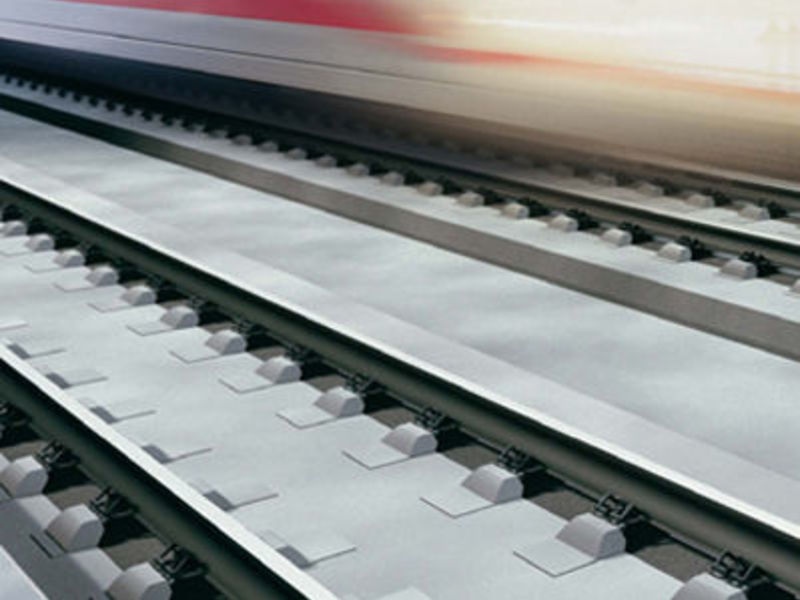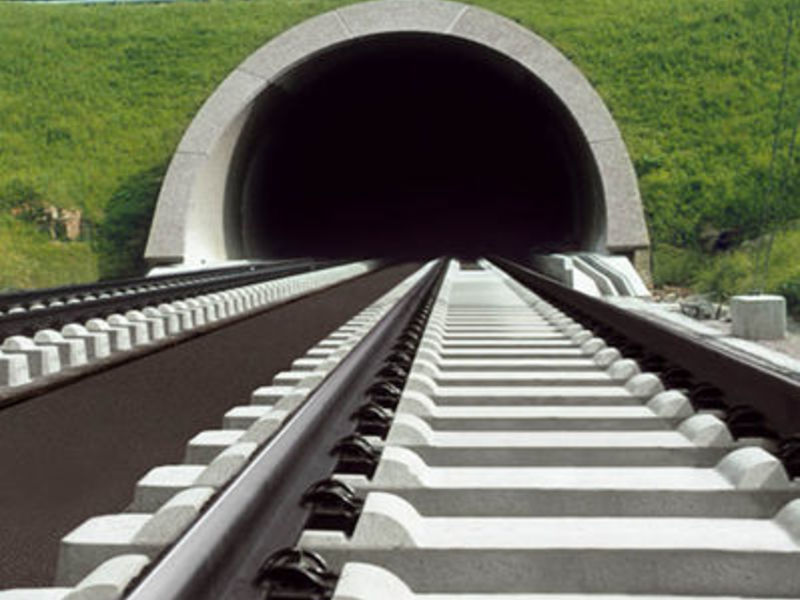Ballastless track systems: top performance on a firm foundation
Rail traffic is reaching out toward new horizons on ballastless track systems. The arguments are indeed convincing: long life cycles, top speed, ride comfort, and great load-carrying capability. You take no chances with these systems, especially with newly constructed lines: even at speeds over 300 km/h, your coffee will stay in your cup. Practically maintenance free, ballastless track systems ensure almost 100% availability over many years. In many cases, a maintenance-free track system is indeed the more cost-effective solution over the long run.
The actual breakthrough in Germany for ballastless track technology on high-speed routes took place on the new line between Cologne and the Frankfurt/Rhine-Main complex. For the first time, Deutsche Bahn AG applied this new technology on a full section of track: with extremely high levels of technical quality, and with great overall success.
The success of ballastless-track technology is primarily based on the following advantages:
- Stability, precision, and ride comfort
- Long life cycles and practically no maintenance
- Flexibility and end-to-end effectiveness in application
- Basis for optimal routing of rail line
Overview of ballastless track systems
Ballastless tracks can be built on either asphalt or concrete supporting layers. Track systems installed on asphalt supporting layers predominantly feature direct-support configurations: for example, in the form of GETRAC® and ATD applications. On the other hand, systems implemented with concrete supporting layers offer the selection among an optimal diversity of models with homogeneous system structures.
Starting from the basis of traditional trough-track designs with mono-block sleepers, RHEDA track models were further developed to track systems with bi-block sleepers. Bi-block applications guarantee a safe and reliable bond between the sleeper and the infill concrete as well as easier handling. The restoration of the Berlin MRT system (the S-Bahn) enabled gaining of extensive valuable insights into the structural engineering of such track systems. This experience resulted, for example, in further development of the full-block bi-block sleeper, to design the type B 355 TS-M. This sleeper is characterized by reduction in total structural height. The engineering design of this model guarantees a high degree of exactness in track gauge, as well as in overall track geometry. In addition, these modifications enabled further improvement in the bond of the sleeper in the structural concrete.
Earlier RHEDA models occasionally developed longitudinal cracks between the trough and the infill concrete that could influence the long-term behaviour of the ballastless track system. This development prompted engineers to consider the design of a RHEDA model without a trough. This model was successfully implemented with mono-block sleepers on the Berlin-Hanover high-speed line, in Rathenow. Experience gained with the RHEDA-BERLIN model, and with RHEDA designs without trough, led in turn to development of the B 355 M lattice-truss sleeper. These developments formed a further significant milestone on the way to the pioneering RHEDA 2000® system.




